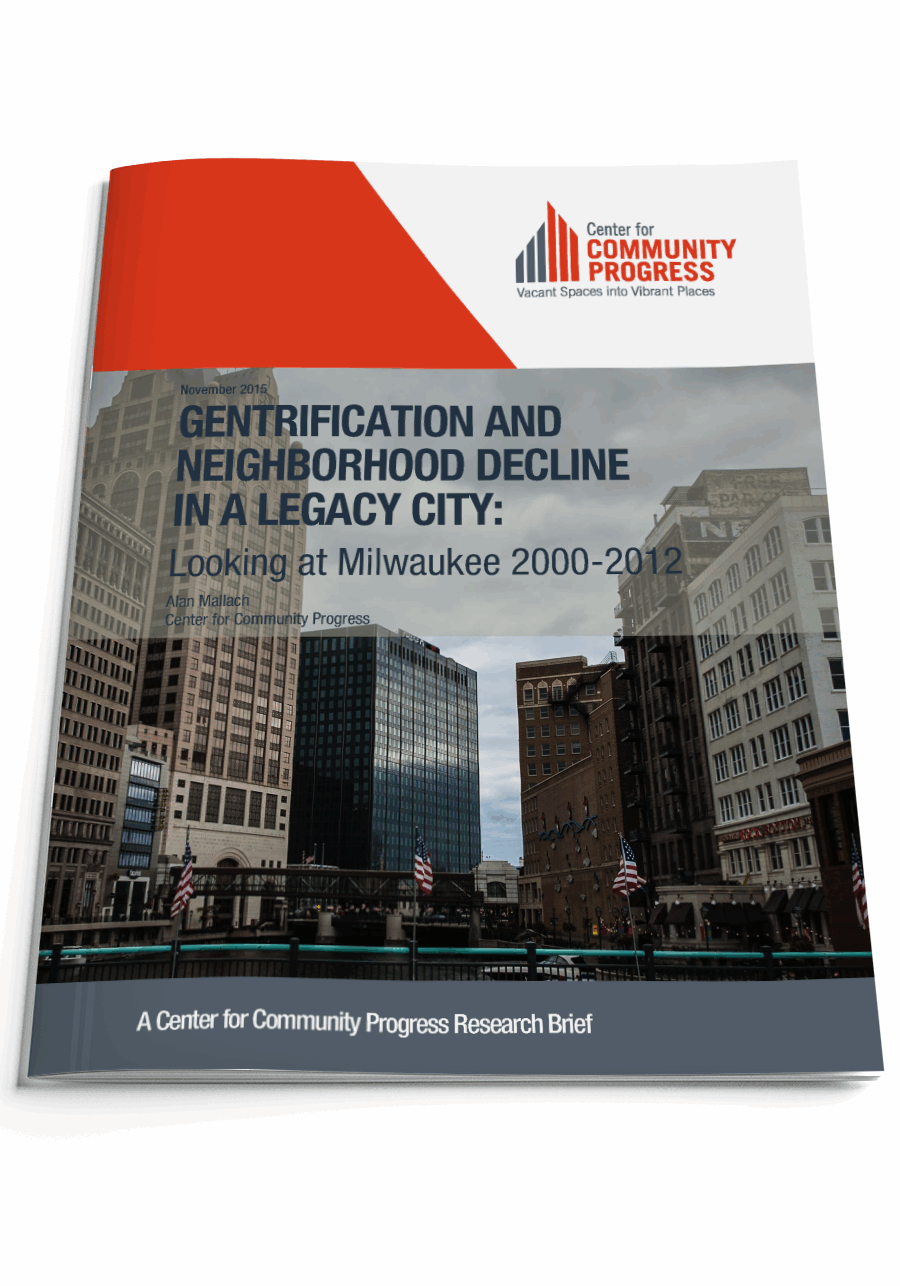Gentrification and Neighborhood Decline in a Legacy City
Looking at Milwaukee, Wisconsin 2000-2012
Topic(s): Local Analysis, Parcel Data & Neighborhood Markets
Published: November 2015
Geography: Wisconsin
Author(s): Alan Mallach (Senior Fellow)
Gentrification is the subject of extensive, often intense, discussion and controversy. The extent to which gentrification is affecting American cities and neighborhoods, and its significance in the larger context of the ebb and flux of urban neighborhoods often remain unclear. It is particularly important to ask this question about cities outside the handful of ‘magnet’ cities like New York or San Francisco, but where some degree of revival- often reflected in the in-migration of young, well-educated, so-called ‘millennials’- may be taking place.
These include many of the nation’s legacy cities, older industrial cities in the northeast and Midwest such as Pittsburgh, Baltimore, St. Louis or Milwaukee. Since the national discourse on gentrification has been dominated by what is taking place in cities like San Francisco or New York, cities which are not necessarily representative of the majority of American cities, there has been far less thoughtful analysis of conditions on the ground in legacy cities, and their implications for those cities’ future.
The purpose of this paper is to help turn the focus of the conversation toward those cities by offering a preliminary analysis of the extent and nature of neighborhood change in Milwaukee. Milwaukee is a representative Midwestern legacy city. Although it lost 20% of its population between 1960 and 2010, its population appears to have stabilized in recent years. In 2010, 39% of the city’s population was African-American, 36% non-Latino white, and, reflecting that community’s rapid growth in recent years, 18% Latino. Milwaukee is experiencing relatively strong revival by comparison to its peer older industrial cities. Its millennial population is growing. The city continues to experience, however, significant levels of distress.
This report finds that gentrification since 2000 is largely limited to one small area of the city, and the evidence that displacement has taken place as a result is at best limited. By contrast, a far larger part of the city is in decline, reflected in pronounced drops in income and house prices. Predominantly African-American census tracts have been disproportionately affected by declines in house prices, leading to massive loss of wealth in the city’s African-American community.

Topic(s): Local Analysis, Parcel Data & Neighborhood Markets
Published: November 2015
Geography: Wisconsin
Related Publications
Other Related Content
Subscribe to join 14,000 community development leaders getting the latest resources from top experts on vacant property revitalization.
